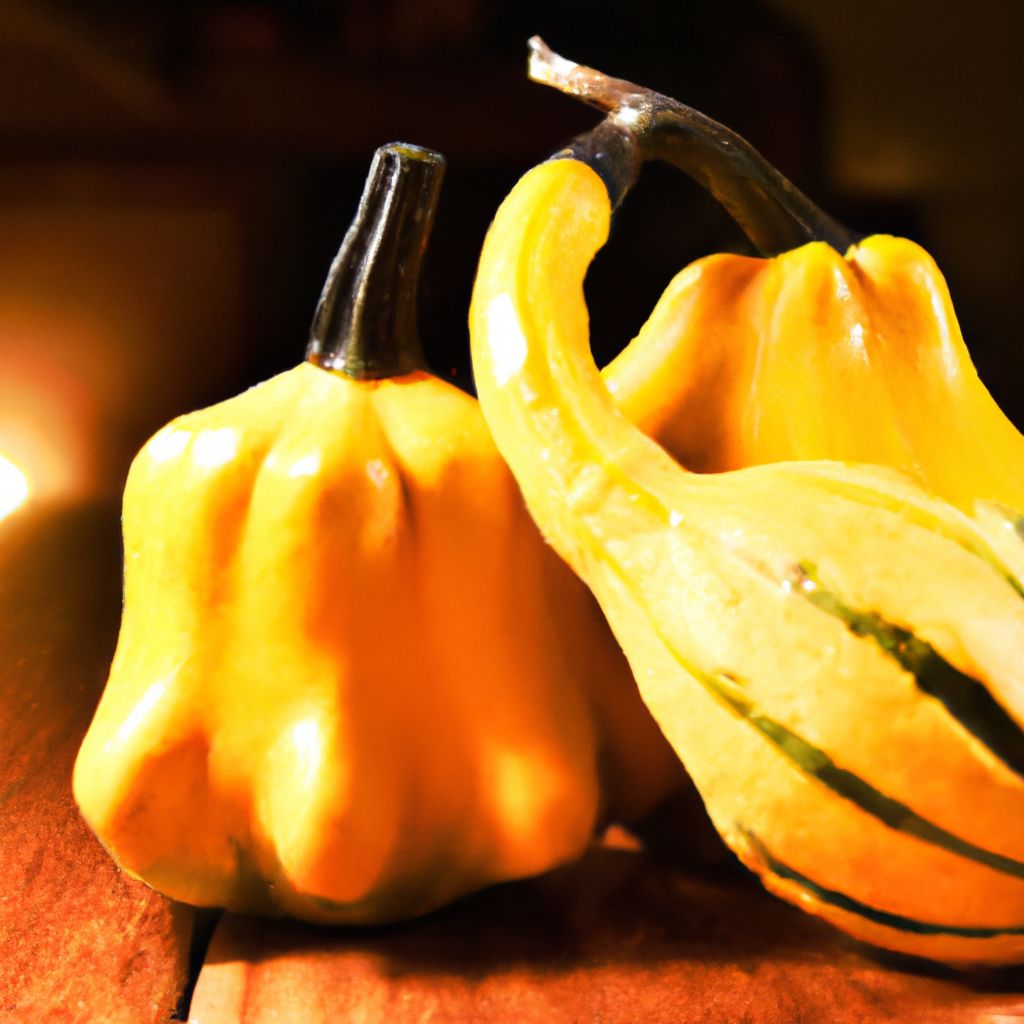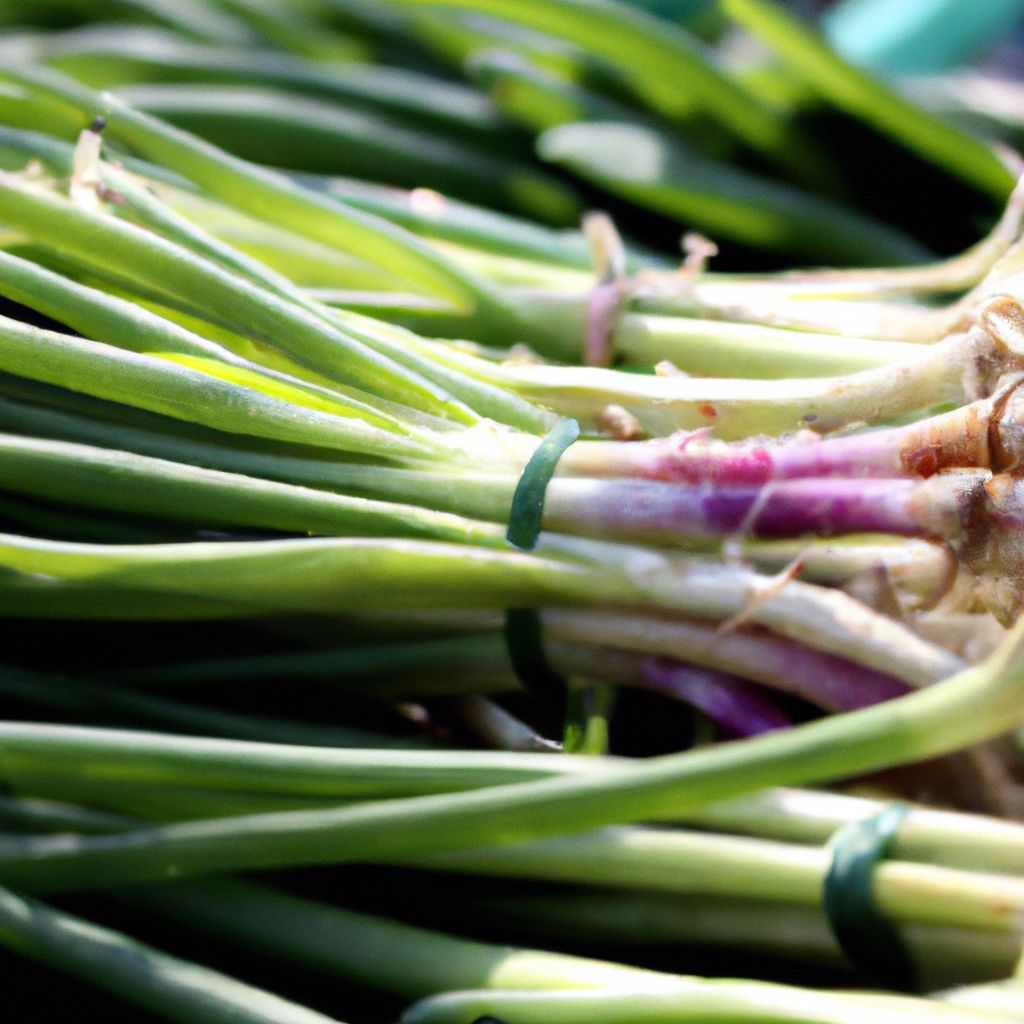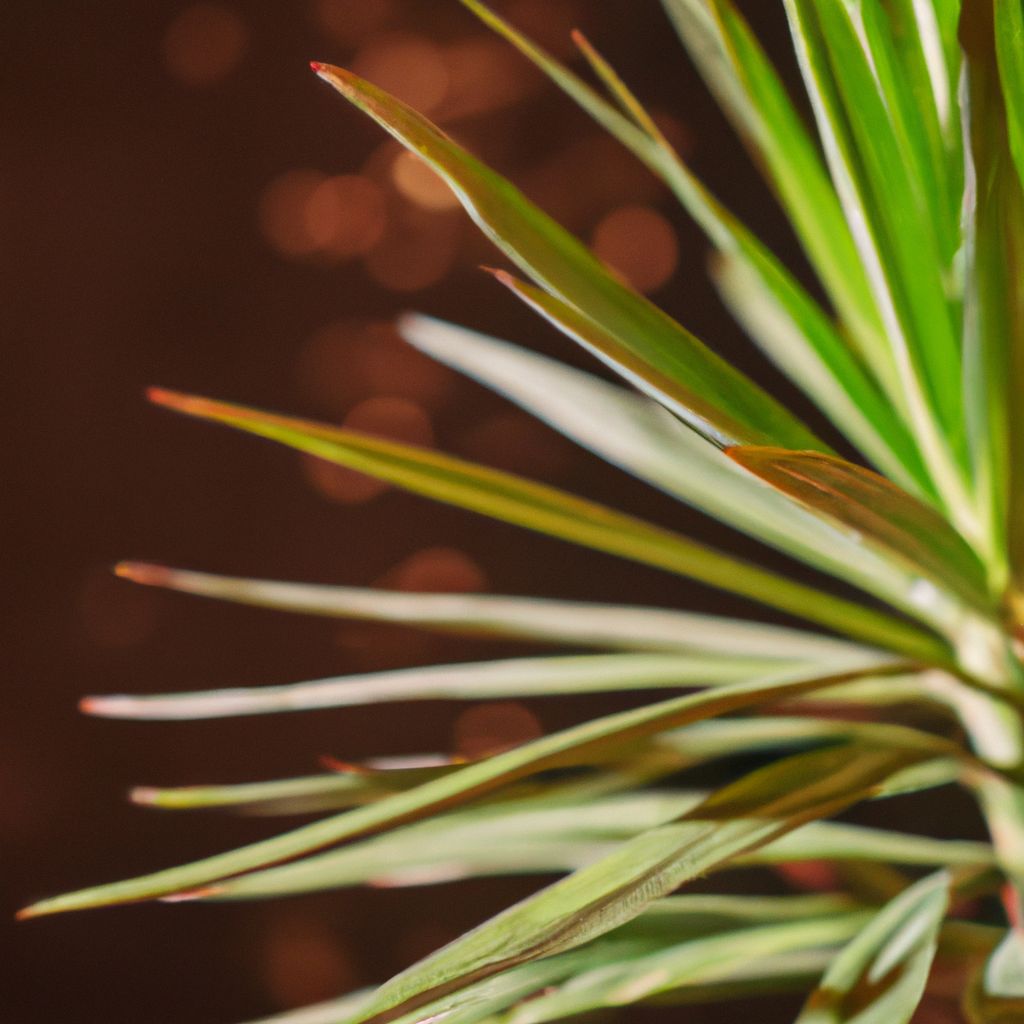Acorn squash is a nutritious and delicious winter squash with a signature acorn shape and sweet, nutty flavor. Native to North and Central America, acorn squash belongs to the Cucurbita family and is a favorite ingredient during fall and winter. Growing acorn squash at home is easy and rewarding, allowing you to enjoy fresh-picked squash all season long.
What Makes Acorn Squash a Fall Favorite?
Acorn squash is synonymous with autumn for several reasons. Firstly, its colors of orange and green mirror the changing fall foliage. The sweet, nutty taste also pairs perfectly with autumnal spices like cinnamon, nutmeg, and ginger. Finally, acorn squash comes into season in early fall, making it plentiful and inexpensive during this time. Its unique shape also makes it a festive decoration. For these reasons, acorn squash has become a quintessential symbol of the fall season.
Selecting the Right Location for Growing Acorn Squash
When choosing where to plant your acorn squash, select a sunny spot with nutrient-rich, well-draining soil. Here are some key factors to consider when selecting the ideal location:
- Sunlight – Acorn squash needs at least 6-8 hours of direct sunlight daily for optimal growth and fruit production. Choose a location that receives sunlight throughout the day.
- Soil – The soil should be loamy and rich in organic matter, with a pH between 6.0-6.8. Good drainage is also crucial to prevent fungal root diseases.
- Space – Leave plenty of space between plants, at least 2-3 feet apart, as the vines can spread up to 6 feet wide. Avoid cramped spaces.
- Wind Protection – Protect your plants from heavy winds which can damage vines and foliage. Use fences, trellises, or plant on the leeward side of other crops.
- Water Access – A nearby water source is useful for convenient irrigation during the growing season.
When assessing your site, observe the sunlight, drainage, and spacing to ensure it meets the needs of acorn squash plants. With the right location, you’ll be on your way to a thriving crop.
Companion Planting
Certain companion plants can be strategically planted near acorn squash to improve growth and deter pests. Consider pairing acorn squash with these beneficial companion plants:
- Radishes – Repel cucumber beetles
- Marigolds – Deter aphids and other pests
- Nasturtiums – Trap squash bugs and beetles
- Oregano and basil – Repel aphids and mosquitoes
Avoid planting acorn squash near potatoes, which can stunt their growth.

Preparing the Soil for Planting
Proper soil preparation sets the stage for successfully growing acorn squash. Here are some tips:
Test and Amend the Soil
Test your garden’s soil pH and nutrient levels with a soil testing kit. Acorn squash thrives in slightly acidic soil with a pH of 6.0-6.8. If the soil is too acidic, add lime several weeks before planting.
Add Organic Matter
Incorporate 2-4 inches of compost, rotted manure, peat moss or other organic materials. This provides nutrients, improves drainage and moisture retention.
Remove Weeds and Debris
Eliminate any weeds, rocks or plant debris. Weeds compete for space, light and nutrients needed for squash plants.
Fertilize
Add a balanced organic fertilizer before planting based on soil test results. Slow-release nitrogen encourages lush foliage growth.
Till Thoroughly
Use a tiller or fork to break up and loosen the top 8-12 inches of soil. This facilitates root development.
Taking the time to prepare your planting beds will pay off with healthier, more productive acorn squash plants.
When and How to Plant Acorn Squash Seeds
Growing acorn squash at home is a warm season activity. This is a crop that requires soil and air temperatures above 70°F to germinate and grow properly. Here are some tips on timing and methods for planting acorn squash seeds:
When to Plant
- Spring – Direct sow seeds 1-2 weeks after your last expected spring frost date when the soil has warmed sufficiently.
- Summer – If starting seeds indoors, plant seeds indoors 3-4 weeks before your last spring frost date. Transplant seedlings when outdoors temps remain above 70°F.
- Fall – Some gardeners sow a second crop in late summer for a fall harvest before first frost.
How to Plant
Direct Sowing:
- Plant seeds 1 inch deep and 2-3 feet apart in rows or hills.
- Water thoroughly after sowing. Maintain even soil moisture for best germination.
- Thin seedlings to one plant per mound after true leaves emerge.
Starting Indoors:
- Sow 2-3 seeds per cell in sterile seed starting mix. Keep warm (70-90°F) until sprouted.
- Transplant seedlings when they have 2-3 true leaves. Harden off for 7-10 days before transplanting.
- Plant seedlings 2-3 feet apart after frost danger has passed.
Follow these guidelines for optimal timing and methods when planting your acorn squash seeds.
Caring for Your Acorn Squash Plants

Caring for acorn squash plants involves providing adequate water, nutrients, and pest protection. Here are some tips for keeping your plants healthy and productive:
Watering
- Water plants consistently, about 1-2 inches per week. Avoid drought stress.
- Increase watering during flowering and fruit development when water needs are higher.
- Use drip irrigation or soaker hoses to target the roots. Avoid wetting foliage, which can encourage diseases.
- Mulch around plants to conserve soil moisture and reduce weeds.
Temperature and Sunlight
- Acorn squash thrives in full sun. Choose a location with at least 8 hours of direct sun daily.
- Ideal growing temperatures are 70-85°F during the day and 60-70°F at night.
- Use floating row covers or cold frames to extend the growing season into fall.
Fertilizing
- Fertilize plants every 3-4 weeks with a balanced organic fertilizer.
- Apply according to package directions to prevent over-fertilizing, focusing on nitrogen for vine growth.
- Side dress with compost midseason to replenish nutrients.
Pollination
- Acorn squash has separate male and female blossoms that require pollination for fruit set.
- Attract natural pollinators by avoiding pesticides and interplanting flowers.
- Hand pollinate using a small brush if needed during early morning when pollen is most viable.
Pest and Disease Control
- Inspect plants frequently for signs of pests like squash bugs, squash vine borer, cucumber beetles or diseases.
- Remove diseased plants immediately to prevent spreading spores.
- Control pests using organic methods such as insecticidal soap, row covers, or handpicking.
- Improve air circulation and avoid wetting leaves to prevent fungal and mildew diseases.
Training Vines
- Provide vines room to sprawl in garden or train them up a trellis or fence using soft plant ties.
- Prune away excess leaves or vines to improve air circulation and sunlight exposure.
- Turn or angle fruits to face upward to prevent rotting from soil contact.
By attending to these key care needs when growing acorn squash at home, your acorn squash plants will thrive and reward you with a bountiful harvest.
Tips for Growing Acorn Squash at Home in Containers
Container gardening is an excellent option if space is limited. Follow these tips for successfully growing acorn squash in pots:
- Container Size – Use a large container, at least 10-15 gallon capacity, to accommodate extensive root systems.
- Soil – Use a well-draining potting mix enriched with compost.
- Sun – Place containers in full sun. Move to follow the sunlight as needed.
- Water – Check soil moisture frequently and water when the top few inches become dry. Provide 1-2 inches of water weekly.
- Fertilizer – Use a water soluble fertilizer every 2-3 weeks.
- Support – Provide strong trellising for vines to grow vertically. Clip back wayward vines.
- Overwintering – Move pots to a protected area before temperatures drop below 55°F.
Knowing When and How to Harvest Acorn Squash
Harvesting acorn squash at precisely the right time maximizes flavor and storage potential. Follow these guidelines for identifying peak ripeness:
- Days to Maturity – Begin checking squashes 80-100 days after seeds were sown. Different varieties mature at slightly different rates.
- Color – Ripe acorn squashes will have a deep green, orange or yellow color depending on variety. Avoid pale green squashes.
- Rind – A mature acorn squash will have a hard, tough rind that is difficult to pierce with your thumbnail.
- Stem – Dry, shriveled stems indicate the squash is ripe and ready for picking.
- Touch Test – Ripe squashes will feel very hard when gently squeezed near the stem.
Use sharp pruners to carefully cut squashes from the vine, leaving a 2-3 inch stem attached. Harvest during the cool morning hours. Wear gloves to prevent irritation from prickly stems.

Post Harvest Curing
Leave harvested acorn squashes in a warm area out of direct sunlight for 10-15 days before refrigerating for long term storage. This curing process thickens the skin and heals any minor abrasions. Provide good airflow by spacing squashes and turning them periodically.
Storing Acorn Squash After Harvest
Proper storage conditions are critical for maximizing acorn squash shelf life after harvest. Follow these tips:
- Curing – Cure freshly harvested squashes for 10-15 days before refrigerating.
- Temperature – Store cured squash for 1-3 months at cool temperatures of 50-60°F with low humidity.
- Ventilation – Ensure good air circulation. Do not store in sealed plastic bags.
- Handling – Avoid damaging the skin which can introduce rot. Do not wash before storage.
- Inspection – Check squash frequently for signs of decay and discard any spoiled pieces.
- Separation – Store away from ethylene-producing fruits like apples that hasten ripening.
- Containers – Place squashes in breathable bins, stacked no more than 3 high. Do not pile up squashes.
- Freezing – Cooked squash can be frozen up to one year. Simply cook, cool, freeze in airtight bags.
Follow proper post harvest storage conditions to maximize the shelf life of your acorn squashes.
Cooking and Enjoying Your Acorn Squash
The sweet, nutty flavor and smooth, tender texture of acorn squash makes it extremely versatile to cook with. Here are some delicious ways to enjoy your homegrown acorn squash harvest:
How to Cook Acorn Squash
- Baking – Scoop out seeds, brush with oil and seasonings, bake cut-side down at 400°F until tender, about 45 mins.
- Roasting – Toss cubed squash in oil, roast at 425°F, stirring occasionally, for 25-35 mins until browned and tender.
- Microwaving – Pierce several times with a fork, microwave on high for 12-15 minutes, slice open and scoop out flesh.
- Sautéing – Peel, cube, and sauté in butter or oil for 15-20 mins until lightly browned and cooked through.
- Steaming – Cut in half, scoop out seeds, and steam for 15-20 minutes until fork tender.
- Grilling – Brush halves with oil, grill flesh-side down over medium heat for 25-35 mins, turning occasionally.
- Pressure Cooking – Cut squash into chunks, pressure cook for 2 minutes, then release pressure and scoop out flesh.
Tasty Ways to Use Acorn Squash
- Roast squash halves, then stuff with grains, cheese, veggies or meat for a hearty meal.
- Purée roasted squash and fold into soups, pastas, or risotto for added nutrition.
- Toss cubed roasted squash with quinoa, chicken, feta and spinach for a salad.
- Layer roasted squash into lasagnas or casseroles for extra flavor.
- Bake squash rings topped with an egg for a fun veggie breakfast.
- Blend cooked squash with broth and spices to make a velvety soup.
- Swap spaghetti squash for acorn squash ribbons sautéed in garlic butter.

With its adaptable nature, acorn squash can be incorporated into both sweet and savory dishes for breakfast, lunch, dinner, and even snacks!
Tips for Successful Acorn Squash Growth
Growing healthy, productive acorn squash starts with following some key best practices:
- Choose a planting site in full sun with fertile, well-draining soil.
- Enrich soil with aged compost and all-purpose organic fertilizer before planting.
- Start seeds indoors or sow directly in soil after danger of frost is past.
- Space plants 2-3 feet apart to allow for spreading vines.
- Install trellises or fences early on for vine support and improved growth.
- Water 1-2 inches per week and increase during fruiting stage.
- Weed regularly to prevent competition for water and nutrients.
- Use fabric row covers to protect young plants from pests.
- Control weeds, bugs and diseases through vigilant monitoring and organic methods.
- Fertilize plants every 3-4 weeks to maintain nutrient levels.
- Harvest squash when the rind is hardened and stem is dry.
- Cure squash after picking then store properly to maximize shelf life.
Following these simple tips throughout the growing season will set your acorn squash plants up for success!
Frequently Asked Questions About Growing Acorn Squash
Growing acorn squash for the first time? Here are answers to some commonly asked questions:
How can I tell when my acorn squash is ripe and ready to pick?
Indicators an acorn squash is fully ripe include a hardened, deep-colored rind, dry stem, and full size of 5-7 inches in diameter. The squash should also feel very firm when gently squeezed.
What are some common pests and diseases of acorn squash plants?
Squash bugs, cucumber beetles, and squash vine borers are some pests that affect acorn squash. Powdery and downy mildew, alternaria leaf spot, and blossom end rot are frequent diseases.
Is it better to start acorn squash seeds indoors or directly outdoors?
You can start seeds indoors 2-4 weeks before your last expected frost for a head start on the season. Direct sowing seeds into the garden after the danger of frost is past is an easier method.
How much space do I need to allow for each acorn squash plant?
Give each acorn squash plant plenty of room to sprawl – at least 2-3 feet in all directions. They have long trailing vines that can spread up to 6 feet.
Can I grow acorn squash in containers?
Yes, acorn squash can be grown in large containers at least 10-15 gallons in size. Use trellises to support vertical vine growth and be diligent about watering.
We hope these tips help you enjoy a successful harvest of homegrown acorn squash this season. Let us know if you have any other questions about growing acorn squash at home!















































